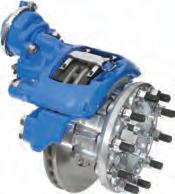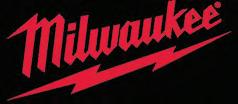A POLARIZED SOCIETY
The current U.S. society is more polarized than it has been in the last 50 years, and is polarizing faster than other developed countries.


The current U.S. society is more polarized than it has been in the last 50 years, and is polarizing faster than other developed countries.

Trucking is all we do. When you choose Great West Casualty Company to insure your trucking business, you are getting over 60 years of experience serving the trucking industry.

Our agents work with you. We selectively choose agents with a keen focus on the trucking industry. Our agents are knowledgeable, dependable, and responsive. They understand your needs and work with you to match the right coverage and level of service for your trucking operation.
Do one thing, and do it right. Our agents can guide you through the process and customize a plan to provide you the broadest protection possible. You can be confident knowing that our service begins, not ends, with the issuance of your policy.
Great West Casualty Company – No matter where the road takes you, you will discover that at Great West, The Difference is Service ® .
NEVILLE, CAE
STEVENS
MEINERS
LUSTER
GARY HANDLEY
SAM SWANBERG
KEVIN WILLIAMS




Peterbilt of Des Moines is located at 5825 SE Delaware Avenue, adjacent to Sam’s Club, in Ankeny. Their service center features 24 service bays with factory-trained technicians, and a huge retail parts department with quality truck parts for all makes. Additionally, they offer a full line of new Peterbilt trucks and a fine selection of used commercial vehicles.
The Iowa Wave from the Kinnick Stadium stands is one of the greatest traditions in college football. The Hawkeyes’ relationship with UI Stead Family Children’s Hospital, however, extends beyond The Wave. Since 2009, groups of Stead patients – past and present - have been Kid Captains for the Hawkeyes, and this year Carver Meiners, son of IMTA’s Director of Safety & Members Services Allison Meiners, was selected as 1 of the 12 Kids Captains for 2022. As part of being a Kid Captain, Carver and the Meiners family got to experience Kids’ Day at Kinnick by joining the players on the field for photos following an exclusive “inside look” at Kinnick Stadium. Carver is the Kid Captain for the Iowa Hawkeyes game at Purdue on November 5.

As I write this column, we are quickly approaching our annual management conference which coincides with the association’s year end on September 30. This also means that my term as the Chairman of the Board is coming to an end. This has been a fun and exciting adventure and I am honored to have been able to follow in the footsteps of my father and serve in this role. But in all honesty, it sure went by very quickly too. I swear we were just in Des Moines a few weeks ago kicking off the new year.
As I reflect from the perspective of the association chair man over the last year, I continue to take great pride in this organization and more importantly, the many dedicated members and volunteer leaders that are truly helping us continue to be as effective as we defend and represent the needs of our members.
Leadership is demonstrated in so many ways through out the IMTA. The Iowa Council of Safety Management, LEAD IMTA council, Allied Division, and so many com mitted individuals and companies that weigh in on our efforts by making phone calls or meeting with legislators and regulators. I am always in awe of all the people that are providing valuable leadership to IMTA.

Not only do these folks possess the expertise but the desire to be engaged and active. Watching with admira tion, the scope of this network of volunteer leaders and seeing them in action was one of the highlights of my role as Chairman. There is a lot of enthusiasm for everything we are doing. It was extremely gratifying to see so many dif ferent people – from large car riers to small carriers, from large suppliers to small suppli ers, from those that have been involved for years to those just starting their journey, everyone was engaged and involved at every level. Those are the kind of contributions that make an average association, a great association so THANK YOU for all your contributions, it really makes an important impact.
orities, and this is important. IMTA is blessed to have Board members that come to the meetings, participate in the monthly calls, attend the IMTA events and are always ready to roll up their sleeves and get after it. I saw this time and again over the last year as we continued to work on our lawsuit abuse legislation and several other priority issues. The board and this association are comprised of quality leaders that are focused on doing the right thing and getting the results that will have a positive impact on all members. That defines an outstanding organization in my opinion.
My only disappointment as Chairman is that we couldn’t celebrate a big victory at the Capitol with the passage of our lawsuit abuse legislation. This is an issue that is impacting every IMTA member. We will continue to engage in this critical effort in the upcoming session. I am confident that we will be successful down the road.
IMTA IS BLESSED TO HAVE MEMBERS THAT COME TO THE MEETINGS, PARTICIPATE IN THE MONTHLY CALLS, ATTEND THE IMTA EVENTS AND ARE ALWAYS READY TO ROLL UP THEIR SLEEVES AND GET AFTER IT.
As truckers, we are going to continue to face challenges, this is a tough business but any of us in trucking are more than aware of the environ ment we operate in. The one source of strength and unity we all have is our association and given what I have seen over the last year, our associ ation is strong, our members are engaged, and our volun teer leaders are committed.
IMTA will remain steadfast in moving the needle for Iowa’s trucking industry. That is the kind of organization I want to be a part of.
I also would like to thank my fellow board members. IMTA has a great Board. Every board member is active and more importantly engaged and attentive to our pri
I hope you share my enthusiasm for IMTA. I will con tinue to be involved and will look forward to our continued work together.
trucks



over
the parts,


I am going to dive into a topic that continues to dominate conversations with IMTA members, friends, family and even strangers. It seems that everyone is frustrated and discour aged by the lack of civility and respect that prevails when people have opposing views.
In recent years, I have heard from far too many people that have lost longtime friends and sacrificed business rela tionships because of opposing political views. In a recent article the author highlighted national polling results that revealed an alarming number of estrangements among family members all tied to differing political views and votes for specific candidates. I know of situations of this nature, and I suspect you have as well.
I have been shocked and quite frankly saddened over the last year when members have threatened to drop out of IMTA because we won’t expend our political capital on an issue that is unrelated to our primary mission and purpose. And, most recently we had a prospective member share some hesitation in joining until we identified which political party we were more aligned with.
Given that most of our legislative priorities are non-par tisan, we work with both sides of the aisle and strategically, the party that is in control is naturally going to get more of our attention. We have never wavered in our strategy to support the legislators - both Democrats and Republicansthat support the trucking industry and don’t intend to change that policy. It has served us well for 80 years.
IMTA was founded by a group of competitors that with out a doubt had opposing views on several things including their politics. However, this group still found a way to work together and determined that coming together as one unified voice on the important issues was beneficial for the entire trucking industry. This prevail ing philosophy has also served us well as an organization.
I believe that people in the trucking industry are arguably some of the hardest working, sensible and politically active people you will find. IMTA mem bers do their homework, understand the issues, and take the time to be engaged. I have seen this in action many times throughout my career as we have activated our members in a matter of minutes and changed the course of a legislative outcome. It is one of our most effective legislative tools.
The mudslinging, vulgarity, and lack of common courtesy in conversation and every day behavior is a reflection of the level of dysfunctionality that seems to be everywhere. Blaming politicians, social media, parents, teachers, and everything and everyone else isn’t going to solve this prob lem. We all bear some of the responsibility and we all need to be part of the solution.
We can do better, and we must do better.
We must all work on our listening skills and strengthen our patience muscle. People are passion ately clinging to opinions that have no factual basis and then demanding every one share that opinion. On a broader level, they expect public policy decisions to be made on that same pas sion and when that doesn’t happen all hell breaks loose.
Instead of attacking each other or ridiculing someone that isn’t on the same page, consider engaging in a civil and respectful conversation. Ask thoughtful questions and here’s a new twist – really listen to what they are saying. Too often we are so focused on our rebuttal that our listening skills become nonexistent.
I BELIEVE THAT PEOPLE IN THE TRUCKING INDUSTRY ARE ARGUABLY SOME OF THE HARDEST WORKING, SENSIBLE AND POLITICALLY ACTIVE PEOPLE YOU WILL FIND.

We all have a responsibility to work at changing this hostile and angry world. I know it isn’t going to happen quickly but acknowledging that change is needed is a valuable first step.
We must move beyond the standard of determining what is true based on whether we like it or not. Our priority should be looking at all sides of the issue and then helping others gain a deeper understanding of the issue. This is a much different approach than getting someone to think like we do and then if we are unsuccessful in changing their opinion, we automatically dismiss them and throw in some ridicule for good measure.
IMTA is an organization comprised of many strong and passionate leaders with many strong and passionate opinions. We have always been able to channel that tremendous lead ership and passion to get positive results for our priorities.
That kind of leadership is needed now on a broader level.
IMTA’s successful advocacy program would be non-exis tent if we took this approach.
We aren’t always going to change the opinion of others, but there is a strong possibility that we will broaden their understanding while also potentially preserving a future ally and maybe even learning a thing or two ourselves.
U.S. District Court for the Western District of Louisiana Judge Terry Doughty issued a permanent injunction blocking the leasing moratorium in a ruling in mid-August.. President Biden had issued a moratorium on federal oil and gas leasing.

Doughty wrote that President Biden “lacked any authority” to implement the policy under the Mineral Leasing Act (MLA) and Outer Continental Shelf Lands Act (OCSLA) which regulates federal leasing on public lands and waters.
“The Court finds Section 208 of Executive Order 14008 is ultra vires, beyond the authority of the President of the United States, and in violation of the OCSLA and the MLA,” he wrote in the opinion. “Even the President cannot make significant changes to the OCSLA and/or the MLA that Congress did not delegate.”
Biden issued Executive Order 14008 — titled the “Executive Order on Tackling the Climate Crisis at Home and Abroad” — on Jan. 27, 2021, days after taking office. The action ordered the Department of the Interior (DOI) to pause new oil and natural gas leases, a policy Biden pledged to pursue during his 2020 campaign, while it conducts a review of the federal leasing program.
The DOI completed the review in late November.
“President Biden’s executive order to choke off energy development didn’t just increase prices and hurt American families — it was flatly illegal,” Montana Attorney General Austin Knudsen said in a statement
“THIS DECISION IS A SIGNIFICANT STEP TOWARD ENDING THE ONGOING UNCERTAINTY OVER THE FUTURE OF ENERGY DEVELOPMENT ON FEDERAL LANDS AND WATERS.”
after Doughty issued his ruling. “This decision is a victory for the rule of law and the workers and the rural communities who depend on the energy industry.”
In March 2021, Montana joined a 13-state coalition challenging the moratorium. Three months later, Doughty issued a preliminary injunction blocking the policy from going into effect.
“This decision is a significant step toward ending the ongoing uncertainty over the future of energy development on federal lands and waters,” Frank Macchiarola, the American Petroleum Institute’s (API) senior vice president of policy, economics and regulatory affairs, said in a statement Friday.
While both the OCSLA and MLA outline processes for the president to modify the leasing programs, the two laws don’t enable a complete pause, according to API. The federal government may choose to appeal the lower court ruling.
Clean energy incentives in the new spending package signed in mid-August by President Biden will trim America’s emissions of heattrapping gases by about 1.1 billion tons (1 billion metric tons) by 2030, a new Department of Energy analysis shows.
Known as the Inflation Reduction Act (IRA), the measure includes a myriad of incentives for green energy production.
The Inflation Reduction Act of 2022 has several policies that support zero-emission vehicle deployment, including tax credits for the purchase of medium-and heavy-duty zero-emission vehicles and the construction of electric vehicle charging stations.
The decision to offer up to $40,000 in tax credits to the buyers of medium-and heavy-duty zero-emissions vehicles, and up to $100,000 in tax credits for the construction of electric vehicle charging stations, “reflects sound and prudent investment in the country’s domestic supply chain and its long-term climate goals.”
The IRA will also direct spending, tax credits and loans to bolster technology like solar panels, consumer efforts to improve home energy efficiency, emission-reducing equipment for coal-and gaspowered power plants, and air pollution controls for farms, ports and low-income communities.
For consumers, that means tax rebates to buy electric vehicles — $4,000 for used vehicle purchase and up to $7,500 for new ones, eligible to households with incomes of $300,000 or less for couples, or single people with income of $150,000 or less.
Not all electric vehicles will fully qualify for the tax credits, thanks to requirements that component parts be manufactured and assembled in the U.S. And pricier cars costing more than $55,000 and SUVs and trucks priced above $80,000 are excluded.
There are also tax breaks for consumers to go green.
One is a 10-year consumer tax credit for renewable energy investments in wind and solar.
For businesses, the bill has $60 billion for a clean energy manufacturing tax credit and $30 billion for a production tax credit for wind and solar, seen as ways to boost and support the industries that can help curb the country’s dependence on fossil fuels.
The bill also gives tax credits for nuclear power and carbon capture technology that oil companies such as Exxon Mobil have invested millions of dollars to advance.
The bill would impose a new fee on excess methane emissions from oil and gas drilling while giving fossil fuel companies access to more leases on federal lands and waters.
Source: Transport Topics
The National Highway Traffic Safety Administration estimates that 9,560 people died in motor vehicle traffic crashes in the first quarter of 2022 – an increase of about 7 percent as compared to the 8,935 fatalities projected for the same quarter in 2021. This would be the highest number of firstquarter fatalities since 2002, NHTSA said.

The agency added that preliminary data reported by the Federal Highway Administration shows that vehicle miles traveled or VMT in the first three months of 2022 increased by about 40.2 billion miles, or about a 5.6 percent increase.
However, according to NHTSA’s calculations, that means the fatality rate for the first quarter of 2022 increased to 1.27 fatalities per 100 million vehicle miles traveled, up from the projected rate of 1.25 fatalities per 100 million vehicle miles in the first quarter of 2021.
“THE OVERALL NUMBERS ARE STILL MOVING IN THE WRONG DIRECTION,” NOTED DR. STEVEN CLIFF, NHTSA’S ADMINISTRATOR. “NOW IS THE TIME FOR ALL STATES TO DOUBLE DOWN ON TRAFFIC SAFETY.”

NHTSA recently began breaking out fatality trends by state for these quarterly estimates. While fatalities increased nationwide, 19 states and Puerto Rico saw traffic deaths decline during the first quarter of 2022 compared to the same period in 2021.
NHTSA added that it would continue to monitor state-by-state numbers to make it easier for state practitioners, researchers, and advocates to see if there is a trend and if there are activities these states are undertaking that are contributing to this decline.
Source: ATA
The number of Americans filing new claims for unemployment benefits in early August and the prior period’s data was revised sharply lower, suggesting labor market conditions remain tight despite a slowdown in momentum due to higher interest rates.

The weekly unemployment claims report from the Labor Department on Thursday combined with strong industrial production in July and underlying retail sales growth to allay fears that the economy was in recession.
Initial claims for state unemployment benefits slipped 2,000 to a seasonally adjusted 250,000 for the week ended Aug. 13. Data for the prior week was revised to show 10,000 fewer claims filed than previously reported. Economists polled by Reuters had forecast 265,000 applications for the week of August 14.
The revision and the modest decline pulled claims well below the 270,000-300,000 range that economists say would signal a material slowdown in the labor market. Unadjusted claims fell 4,536 to 191,834 last week. A surge in applications in Massachusetts was offset by notable declines in California, Ohio, Texas and Georgia.
Companies in the interest rate-sensitive housing and technology industries have been laying off workers in response to slowing demand caused by the Fed’s aggressive monetary tightening campaign to tame inflation. But elsewhere, businesses are hungry for workers.
There were 10.7 million job openings at the end of June, with 1.8 openings for every unemployed worker.
While the labor market remains resilient, the housing market is wilting. A fourth report from the National Association of Realtors showed existing home sales dropped 5.9% to a seasonally adjusted annual rate of 4.81 million units in July, the lowest level since May 2020 during the COVID19 lockdowns.

Outside the pandemic, sales were the slowest since November 2015. July marked the sixth straight monthly decline, the longest such stretch since 2013. The sales drop occurred across all four regions and followed on the heels of news this week that single-family homebuilding hit a two-year low in July.
Though higher borrowing costs are weighing on housing, an outright collapse is unlikely because single-family homes for sale remain scarce, keeping prices elevated. Eighty-two percent of homes sold in July were on the market for less than a month.
The median existing house price increased 10.8% from a year earlier to $403,800 in July. While that was the smallest gain in two years, prices typically retreat in July after surging in June. With fewer homes being built, prices could remain high even as demand softens, presenting a challenge for the Fed.
Source: Transport Topics
A fresh wave of labor strikes at U.K. ports triggered by the spiraling cost of living are adding further strain to battered supply chains, just as they begin to recover from the COVID-19 pandemic.
Experts warn the specter of widespread industrial action will stunt the U.K.’s stuttering economy and may have damaging knock-on effects for nearby shipping routes at a critical time — adding fresh pain points to already-clogged global trade arteries.
More than 500 stevedores at Britain’s fourth largest port, Liverpool’s Peel Port, voted in Mid-August to strike after rejecting a 7 percent pay hike. Staff are demanding pay increases in line with soaring inflation — already more than 9 percent, and rising fast — and accuse bosses of failing to raise pay since 2018 and of reneging on an agreed bonus scheme.
The Peel Port staff are the second set of U.K. dockworkers to announce strike action in August , after 1,900 workers at Felixstowe — the country’s largest port — announced eight days of strike action.
Source: Transport Topics
The major freight railroads signaled they’re ready to negotiate a new deal with their workers based on a presidential report that calls for 24% raises, but the 12 unions involved in the stalled talks covering 115,000 workers still haven’t commented on the recommendations.

The group that represents BNSF, Union Pacific, Norfolk Southern, CSX and other railroads in the talks said that even though the report issued by the Presidential Emergency Board that Joe Biden appointed calls for higher raises than the companies had proposed, they want to reach an agreement to avoid a strike.
“It is in the best interests of all stakeholders — including customers, employees and the public — for the railroads and rail labor organizations to settle this dispute and prevent service disruptions,” said the National Carriers Conference Committee, which represents the railroads.
Both sides have 30 days to negotiate a new contract before federal law would allow a strike or lockout, but even if they can’t reach an agreement Congress is likely to intervene to prevent a strike that would disrupt the flow of goods across all sectors of the economy.
The unions were still reviewing the 124-page report Aug. 17 — one day after it was issued — and didn’t immediately comment on the details. But individual railroad workers commenting about the report on Twitter said it didn’t do enough to address their concerns about restrictive attendance policies that make it hard to take days off and demanding working conditions after thousands of jobs have been cut in recent years.
“It’s clear academic politically motivated labor mediators are out of touch with the reality of working conditions on the railroad today. They chose capital over the needs of workers and our nation,” Union
Pacific engineer Ross Grooters said on Twitter. Grooters also serves on the city council in the Des Moines suburb of Pleasant Hill, Iowa.
Railroad workers expect a new contract to deliver significant raises to combat soaring inflation after they stayed on the job all throughout the pandemic, but many say they are tired of essentially being on
call 24-7 and want working conditions to improve. The major freight railroads have eliminated nearly one-third of their employees — some 45,000 jobs — over the past six years as they overhauled their operations to run fewer, longer trains, so they say they need fewer locomotives and employees to handle all the freight.
In addition to the disagreements over wages and benefits, the unions have stridently opposed railroad proposals to cut train crews from two people down to one. A new proposed federal rule that would require two-person crews in most instances should make it harder to do that, but railroads continue to press for the change in the negotiations. The unions say its a safety issue, not just a jobs issue.
The current contract talks have gone on for more than two years without an agreement and rail workers haven’t had a raise since 2019. The new report issued by a panel of arbitrators this week also calls for workers to receive five $1,000 bonuses in each year of the five-year deal, but it suggests that workers could take on a larger share of their health insurance costs, which would offset some of the raises.
Source: Transport Topics

Your local, family-owned truck dealership, equipped to handle ALL your truck needs – sales and leasing, parts, service and maintenance, body shop and paint booth, and tire and retread options.





One of the most difficult challenges leaders of all organizations face is managing diverse perspectives. So, what can leaders do? Drawing from work we’ve conducted with scholars in psychology, sociology and management, we offer advice on approaching disagreements more productively and training employees to better communicate about divisive topics.

Many management and psychology self-help books suggest that defensiveness and ego threat play a major role in conflict escalation. The prescribed solutions usually involve checking one’s ego at the door. But that advice is not very helpful. It is founded on three common myths:
PEOPLE WHO DISAGREE WITH US DO SO BECAUSE THEY ARE UNINFORMED OR UNINTELLIGENT. When we encounter disagreement, a common impulse is to assume we know the facts and the other person doesn’t. But in reality, each of us tends to focus on facts that support our beliefs and dismiss or devalue those that don’t.
DISAGREEMENT WILL MAKE PEOPLE DEFENSIVE. When talking to someone they strongly disagree with, people think their opponents — not they themselves — are feeling insecure, threatened and anxious. Such perceptions allow us to feel superior and give us an excuse to avoid trying to understand one another.
DISAGREEMENT IS BAD. Most of us think of conflict as negative and go to great lengths to avoid it. But disagreement, when managed well, gets greater results than avoidance does.
To build true collaboration, leaders must empower people to deal productively with opposing views. We offer four strategies and a number of practical steps to achieve that goal.

Learning about disagreement can help us welcome and manage it in future interactions. Here are some ways to foster such understanding:
— REALIZE THAT DISAGREEMENT PROBABLY WON’T FEEL AS BAD AS YOU THINK: By recognizing this, we can learn to approach conflict willingly and eventually experience the benefits of engaging with opposing views.
— SEEK POINTS OF AGREEMENT: We’ve found that teaching leaders how to find points of agreement with people who hold opposing views makes them more willing to engage with information from them. They become better informed and are often struck by sound logic and admirable values behind their counterparts’ positions.
— DIRECT YOUR DISAGREEMENT TOWARD THE TASK, NOT THE PERSON: “There is no learning without debate,” Pixar co-founder Ed Catmull told us. “It is by truly embracing disagreement and differences in perspectives that we make better decisions, because ideas get pressure-tested and challenged. But to be effective, conflict needs to be about the work, not the people.” Management research supports his view.
When confronted with a perspective contrary to their own, some people manage to keep an open mind. Receptive people are more likely than others to listen to arguments from both sides, think deeply about them and evaluate them fairly. As a result, they form ideologically diverse friendships and professional networks.
Cultivating a receptive mindset is possible with the following tactics:
— INTENTIONALLY CONSIDER INFORMATION FROM THE OPPOSING PERSPECTIVE: Classic research in social psychology has demonstrated that telling people to be more objective in evaluating opposing views doesn’t work. It’s more effective to advise them to carefully consider the reasons others hold the views they do. Receptiveness doesn’t require us to tolerate views we find irrational or offensive. We can listen to arguments attentively, come to fully understand them and still believe that we’re right.
— USE THE “LISTENING TRIANGLE”: Ask your opponent about his or her views, listen to the answer and restate it in your own words to make sure you understand it correctly. Then repeat, starting with the same question or a highly similar one. By using the listening triangle, you can ensure that your assumptions about the reasons for someone’s beliefs are anchored in reality, not in your biases.
— FOCUS ON LEARNING: Although people generally approach disagreements hoping to persuade the other side, our research shows it’s more helpful to go into them with the goal of learning and the assumption that our partners share that goal.
Although people generally approach disagreements hoping to persuade the other side, it’s more helpful to adopt the goal of learning and to assume that our partners share that goal.
By recognizing that disagreements are likely to be less upsetting than we think, we can learn to approach conflict willingly.
We developed a natural-language-processing algorithm to identify words and phrases that lead people to be perceived as receptive to another person’s point of view during a disagreement. Using the identified language helps people resolve conflicts more quickly and productively. Our algorithm identified four techniques that convey receptiveness and can easily be employed in training programs:
— HEDGE YOUR CLAIMS: Use words like “sometimes” and “often” to soften your assertions. Acknowledging room for doubt signals humility.
— EMPHASIZE AGREEMENT: Before jumping in with evidence to support your perspective, point out an area of agreement. That doesn’t mean compromising; it simply means recognizing that there are many facets to any debate.
— ACKNOWLEDGE OTHER PERSPECTIVES: Use phrases such as “I understand that you believe …” and “You told me that …” They show your partner that you actually heard him or her.
— REFRAME YOUR IDEAS IN POSITIVE TERMS: Using positive language establishes a constructive tone, and it’s likely that your counterpart will reciprocate. If all efforts to engage constructively are met with hostility and defensiveness, keep your emotions under control and try again. But if you find it impossible to connect, your only option is to withdraw before the discussion escalates into full-blown conflict.
Building on the ways to cultivate a receptive mindset, leaders can take additional steps to make their organizational cultures more tolerant and less divisive:

— LEVERAGE WOMEN: Our research shows that women tend to naturally exhibit conversational receptiveness. When feasible, assign women to lead conversations on contentious topics. And if training time and resources are scarce, focus your receptiveness training on men.
— ESTABLISH A RECEPTIVE TONE AT THE OUTSET: We’ve found that communicators naturally emulate one another’s tone, picking up on words and phrases that signal receptiveness or closemindedness and adopting them in their replies. Setting the right tone at the start can “seed” receptiveness for the rest of the conversation.
— BE A ROLE MODEL: Leaders who want others to share their attitudes and embrace their goals are better off demonstrating intellectual humility and using receptive language than sticking to the old confrontational script.
As organizations grow more diverse and global, and as communication becomes less formal, leaders must be ready to engage with conflict arising not only from the tasks at hand but also from the varying ideologies, life experiences and cultural traditions that employees bring to work. Honing these skills takes time and practice — but the resulting decrease in frustration and negativity is well worth the effort.
We created a phrase to help people remember language that counterparts in a disagreement can use to sound more receptive: “I HEAR you.” HEAR stands for “Hedge your claims,” “Emphasize agreement,” “Acknowledge other perspectives,” and “Reframe in positive terms.” Examples of each strategy appear below.

Julia A. Minson is a decision scientist and an associate professor of public policy at Harvard Kennedy School of Government. Her research focuses on the psychology of disagreement: how people engage with opinions and decisions that are different from their own. Francesca Gino is a behavioral scientist and the Tandon Family professor of business administration at Harvard Business School. She is the author of “Rebel Talent: Why It Pays to Break the Rules at Work and in Life” and “Sidetracked: Why Our Decisions Get Derailed, and How We Can Stick to the Plan.”
c.2022 Harvard Business Review. Distributed by The New York Times Licensing Group.










Des Moines
MHC Kenworth (844) 438-5899
Dubuque
MHC Kenworth (833) 268-2922
Omaha MHC Kenworth (844) 438-5906
Cedar Rapids
MHC Kenworth (844) 435-5789
MHC Kenworth (844) 435-5785
Lincoln
MHC Kenworth (844) 438-5903
Waterloo
MHC Kenworth (833) 646-2106

Political polarization seems to be growing at a fast and furious rate according to many national polls that will be highlighted in this article. Right now, we are all especially sensitive to the political landscape as the midterm elections get closer and the airwaves are saturated with political ads, many of which are seeping in negativity and mudslinging. However, polarization is certainly not unique to our country’s history. From the Civil War to World War II, disturbing polarization in the political arena was palpable. For the last 50 years, legislative initiatives and court decisions have created backlash, moral division and dissension that was often labeled as “polarization”. According to histor ic scholars, political polarization often follows large moral or cultural shifts and as Americans work to navigate these poignant shifts, the political landscape reflects the uneasiness and dissensions that prevails. The rifts between Democrats and Republicans have always been there but some would argue that they have become even worse over the last decade.
Additionally, our culture is changing rapidly as advances in technology and mediums for communication have come about at a dizzying pace. Virtually everyone now has the ability and the platform to express their views, opinions and ideas. With so many people weighing in on the issues, whether they know the facts or have the data to back their opinion, the stage is set for more disagreement than agreement, more talking than listening and more polarization.
While most of will acknowledge that we are frustrated and worried about the level of polarization that exists today, a universal solution or path to change has yet to be clearly identified. This is a challenge we all bear some responsibility in addressing right? So with that in mind, this article will hopefully be a valuable springboard for continued discussion on political polarization and its impact on life in a American.


I do believe polarization has reached new heights in the last two years. There are several factors that have led to this situation, but I believe the polarization of news content is at the core. Before 2016, most elected officials and voters got their information from the same places. They listened to Kay on the radio, or they read the same newspaper or watched one of 3 networks for local news or watched one of 3 cable networks for national news. Now, there are content providers that cater to your political view and are accessible through YouTube or other internet sites. We are no longer getting the same information and it erodes the shared experiences and information we once had.

Political polarization is a separation from the center in terms of ideology — that is, people’s belief systems move closer toward the poles of the spectrum than the middle. When a political system is nonpolarized, the people in that system support a mixed variety of liberal and conservative politicians and issues. When a political system is highly polarized, those same people separate into more homogenous factions supporting the same type of politicians or the same type of issues as each other, but opposing the group at the other end of the spectrum. America’s political polarization can be seen in reactions to COVID, conversations around gun control, opposition or support for Roe vs. Wade, and movements around social rights. U.S. society is more polarized than it has been in the last 50 years, and is polarizing faster than other developed countries according to multiple sources including the Pew Research Center, the Brookings Institute, The New York Times, Fox News and recent research from Brown University and Stanford University. In America today many believe that those with opposing political views are threats to the country’s welfare. At the time of the 2020 presidential election, 89% of Trump supporters believed that the election

of Biden would lead to “lasting harm” to the country, while 90% of Biden supporters believed the same if Trump were elected, according to polling by Pew.
This has not always been the case. The U.S. House of Representatives, for example, used to have more moderate politicians. In the 1971-1972 session, there were 160 politicians considered to be moderate, compared with about 24 today. When more politicians overlap in ideology — like the overlap of a Venn diagram — they are more likely to come to compromises. The Global State of Democracy’s secretary-general, Kevin CasasZamora, indicated that the 2021 report’s label of the U.S. as a “backsliding democracy” is, in part, due to extreme political polarization.
Can we fix this current environment?
That’s an important question with no simple solution. Members of congress rarely interact with each other because they spend so much time fundraising for their reelections. Legislators rarely socialize across party lines because of sensitivity to polarization. We should encourage more human interactions between elected leaders. It’s easier to demonize someone you don’t know.


According to a recent article published in Current Opinion in Behavioral Sciences, a peer-reviewed academic journal analyzing behavior, authors Gordon Heltzel and Kristin Laurin argue that polarization, to a point, can help democracies. Polarization increases engagement in the political cycles by creating citizens who are more likely to vote and disrupt stagnant systems. They are also more likely to seek out policy alternatives and think critically about arguments for and against issues, encouraging multiparty systems. This kind of polarization, then, can ultimately create more stable democracies — those in which citizens are informed of multiple policy issues and differing viewpoints, and have healthy discussions and debates among those holding opposing viewpoints.
Our democracy was built with the assumption that there would be political disagreement, and some degree of polarization. A thriving democracy does not mean that everyone agrees. Rather, a thriving democracy is one where political discord is rooted in civility.
Heltzel and Laurin are quick to point out that there is also a point where polarization can get in the way of governing and providing solutions for citizens. When you have high partisanship, you find that the two parties are reluctant to work together to make progress, creating partisan gridlock. Extreme polarization also leads to citizens refusing to engage with those who hold different viewpoints. Here, opportunities for constructive political debate are gone, as the opposing party is now an enemy. Without the motivation to critically inspect their own viewpoints, highly partisan individuals are unable to see the inconsistencies in their own arguments.
According to Gallup Polling, political polarization can also undermine community trust. Finally, when people lose trust in their political governance, they may stop believing that the government has authority. At this point, polarization no longer helps stabilize a democracy; instead it creates a democracy that cannot solve problems for its citizens and at worse, one that is at risk for turmoil.

Our troubles go well beyond legislative initiatives to a much-needed return to common civility and expecting the best of others instead of projecting the worst on them and their motives. America has a history of periods of unrest, upheaval, and change. Typically, the pendulum swings back to the center. I’ve always been an optimist and believed the trying times bring out the best in Americans, but I’m having a difficult time imagining what series of events will bring people back together when each side is hellbent on blaming the other side for everything and anything. It wasn’t that long ago that our elected officials could disagree with each other during the day, and still go out for dinner or drinks with each other that evening. The same was true for Democratic and Republican staffers and media. It’s time for elected officials to set the example for the rest of us and appeal to our better angels.
Eric Woolson Political Strategist The Concept Work“The assumption that most voters are faithful adherents of Team Red or Team Blue … requires ignoring or soft-pedaling the reality that Americans are steadily shifting away from partisan affiliations,” says Tony Woodlief, author of “I, Citizen: A Blueprint for Reclaiming American Self-Governance.”
In fact, in the 1980s, Gallup polls show that about a third of the population considered themselves independent. Today, that number is hovering above 40%. While about 75% of independents do still lean toward one party or another, the fact that they consider themselves independent is telling of their desire to step away from partisanship and polarization.
According to Samara Klar, a University of Arizona political scientist, the increase in voters categorizing themselves as nonpartisan appears to be driven by an aversion to the hostility and negative arguments of polarized politics.

In fact, a January 2021 poll for Georgetown University’s Institute of Politics and Public Service, conducted by Lake Research Partners and the Tarrance Group, found that a whopping 93% of Americans were frustrated by the “uncivil” behavior of American politicians and 82% stated that the divisions in the country were getting worse.
While the average American is less partisan than the media would have you believe, American politicians have been steadily becoming more partisan over the last 40 years. Neil Malhotra, professor of political economy at Stanford, has hypothesized through research at the Stanford Business Graduate School that politicians are becoming more partisan due to elite donors — the 1% of donors that contribute large amounts of money to political campaigns.
Midterm elections will take place nationally on Nov. 8, 2022. Thirty-four seats are up for election in the U.S. Senate, 14 of which are currently held by Democrats while 21 are held by Republicans. All 435 U.S. House of Representative seats are up for election. Political lore states that a governing party will lose the midterm elections. That doesn’t mean that all is bad for Democrats. An April 2022 poll of 18- to 29-year-olds from Harvard University’s Institute of Politics suggests the 2022 midterm elections may be another record year for the youth vote (matching or surpassing the youth turnout in 2018). Fifty-five percent of these respondents favored Democratic control, although their approval of President Biden has decreased to 41%. More than 50% disapprove of both Republicans and Democrats in Congress.
I see it in the attitudes of incumbents, firsttime candidates, long-time and brand-new activists and young campaign staffers, who view people in the opposite party and the news media as “enemies of democracy” and “enemies of America.” Those beliefs and that rhetoric do great harm and are a threat to the concept of the United States of America and our nation’s stability. This
Although the youth vote looks good for Democrats, other indicators show Republicans are likely to take control of Congress in the midterms. The unpopularity of President Biden (just 39% of Americans approve of his job performance, while 55% disapprove) is a key indicator that congressional control will swing red. According to political analysis conducted by fivethirtyeight, only once since 1946 did a sitting president’s political party experience a



challenger Deidre DeJear. A poll from the Des Moines Register/ Mediacom Iowa found that as of March 2022, 51% of Iowans favor Reynolds while just 43% say they favor DeJear. Incumbent Sen. Chuck Grassley is seeking reelection as a U.S. senator, facing retired U.S. Navy Admiral Mike Franken. According to the New York Times, “Most prognosticators anticipate an easy victory for Mr. Grassley this fall.” Early forecasts by Cook Political Report predict all four of Iowa’s U.S. House of Representative seats going to Republicans. The three Republican incumbents Randy Feenstra, Ashley Hinson and Mariannette Miller-Meeks are expected to remain in their seats. Democrat Cindy Axne’s seat is currently leaning red in favor of Republican Zach Nunn.

Ultimately, whether national or local political control shifts from one party to the other, it is unlikely to affect the polarization levels of U.S. society at large. Fundamentally, political polarization can be good for a country. It can increase engagement and participation in the political process, promoting the need to critically review contentious issues. However, polarization to the point that it creates gridlock causes
dysfunction in a democracy — the political process ceases to provide solutions to citizens’ needs, individuals begin to lose faith in the system and they disengage from the process. Given national and local climates of partisanship, is there a way to move forward?

To create a less polarized society, research shows that citizens and politicians must return to civility — engage in uncomfortable but respectful conversations with political adversaries and allies alike. A famous example of this comes from one of America’s most polarizing institutions: the Supreme Court of the United States. Former Supreme Court justices Antonin Scalia and Ruth Bader Ginsburg enjoyed a close, personal friendship that was widely reported on at the time of Justice Scalia’s death.
Ideologically, they were on opposite ends of the spectrum. In the age of extreme polarization, many partisans were surprised at their friendship. But, considering the available research on polarization, it is not really surprising. As Supreme Court justices, they regularly participated in respectful but critical debate with one another, scrutinized multiple arguments and sought counsel from others. In other words, they acted as engaged citizens in a healthy democracy.
The American Trucking Associations has a launched a new program entitled Women in Motion. The Women in Motion program is designed to elevate and highlight the contributions of women to the trucking industry, while encouraging women to consider a career in trucking. The group will also step up to address important issues within the policy arena that specifically impact women.

Brenda Neville, President & CEO with the Iowa Motor Truck Association, Jenny Abernathy, VP of Enterprise Capacity Development with CRST, and Rhonda Hartman, a professional truck driver with the Iowa Old Dominion Freight Line operation all serve on the Women in Motion Advisory board and are part of the organization’s speakers bureau.
“The is an important initiative that will be yet another valuable tool for attracting women to the industry while also highlighting the many valuable contributions that women are making at all levels in the industry,” said IMTA President Brenda Neville.
The Women in Motion program will focus on the core issues women face on the road and in the industry. Working with coalition partners, policymakers, and business leaders, Women in Motion will work to provide a more secure work environment for women in the industry, including advocating for issues like safer truck parking, as well as increased diversity in trucking.
The program will also provide support and development opportunities for women in the trucking industry, as well as promoting the industry as a career path to women across the country.
“I have been blessed throughout my career to have some amazing mentors and role models – both men and women – that have helped me continue to develop as a leader. This program will be an excellent way to further elevate mentoring opportunities on a national level for any woman that is interested the trucking industry,” said Brenda.
Over the last 5 years, IMTA has seen a significant increase in female participation in almost all their programs as well as an increase of requests for mentors by women.
“We love to see more women at our events and taking leadership positions within our organization and in the industry. It is a promising sign for the association and the industry,” said Brenda.
The Women in Motion Steering Committee and Speakers Bureau can be found on the website: www.trucking.org/women-in-motion. The site also features research and tools that women can use to promote and educate others about opportunities within the industry. A new role within the ATA will oversee the day-to-day management of the program.
Today, nearly eight percent of professional drivers are women, an all-time high, but still lagging the national average for workforce participation for women. Similarly, just four percent of all diesel technicians are women –well below the national average. Women in Motion will help the industry reach this untapped and underutilized segment of the population, highlighting the importance of and opportunities in trucking.
Jenny Abernathy, Vice President of Enterprise Capacity Development, CRST
Cari Baylor, President, Baylor Trucking
Amy Boerger, Vice President and General Manager North America, Cummins, Inc. Shelley Dellinger, Marketing and Public Relations, Cargo Transporters, Inc.
Mandy Graham, Chief Operating Officer, Great West Casualty Company
Wendy Hamilton, Senior Manager, Operations and Executive Support, Pilot Company Rhonda Hartman, Professional Truck Driver, Old Dominion Freight Line.
Kendra Hems, President, Trucking Association of New York
Tamara Jalving, Vice President, Safety and Talent Acquisition, Yellow Jaime Maus, Vice President Safety & Compliance, Werner Enterprises
Megan Melichar, Managing Director, Finance, FedEx Ground
Alix Miller, President & CEO, Florida Trucking Association
Brenda Neville, President & CEO, Iowa Motor Truck Association
Tina Peterson, Professional Truck Driver, Red Pine Transport, Inc.
Rebecca Pohl Liette, Vice President of Marketing, Pohl Transportation
Shellie Shellabarger, Senior Vice President, Field Operations, Stericycle Sarah Statlander, Vice President, Human Capital and Talent Acquisition, Yellow
Marilyn Surber, Transportation Advisor, TenStreet Angela Tillery, Managing Director, Learning & Development, FedEx Freight
Ellen Voie, President/CEO, Women In Trucking Sarah Wellman, Director of Government Relations, Ryder System, Inc.
“I’m proud to be a professional truck driver, but also proud to be a woman behind the wheel,” said Rhonda Hartman, professional truck driver, Old Dominion Freight Line. “This has been a great job—with great pay and benefits—and one that I truly believe more women should consider.”
Why are the current headlines so full of dire predictions? The easy answer is that the press has always used fear as a way to engage us, to draw us in, and capture our attention. It is also true that technology makes it cheap and easy to bombard us with a message of fear on a non-stop basis. But, there are two more things worth considering. While jour nalism is still a profession with standards and ethics, which is practiced by most. There is a growing contingency of those who do not.
their top priority this bid season;
3. The record-high margin of spot above con tract (in January ‘22) – which furthered the shifts listed above and swung a material quantity of loads out of the spot market and into the contract market. The shift has been so dramatic that the premium of spot over contract has completely reversed and reached the opposite extreme, demand has been committed to the contract market to secure capacity (the shipper’s side of the assurance in the contract);
DONALD BROUGHTON Managing Partner, Broughton Capital LLC
Spouting hyperbole is quick and easy; finding and then explaining the truth is more difficult because it is more nuanced and intricate. After digging into the facts and carefully weighing everything, we have con cluded that the spot market declines are not economic weakness. In addition to the ‘False Negatives’ we have been describing for several months, we assert that the recent sequen tial declines in spot market load post vol umes and pricing in the spot market are the consequence of several other factors, factors not related to consumer spending
Instead of the easy answers filled with fear being offered by some pundits, the truth is a complex, but quantifiable and understandable combination of other factors which (we dis cussed in this article last quarter).
1. Increase in the amount fuel surcharge con stitutes of overall rate rising from 12% to 28% led to a series of actions by participants in the marketplace, including:
a. Optimization of contract/minimization of spot to decrease fuel surcharge paid;
b. Share shift from over-the-road truckload to domestic intermodal (truck-to-rail-totruck), especially in Dry Van;
2 . Shippers making ‘guaranteed capacity’
4. Delayed seasonality;
5. Inventory restocking finally beginning to catch up.
“The Higher Cost of Gas is Killing Consumer Spending!” – $5 to $15 per Week, Really? (we do the math)
We should point out that the price of gas oline is up less than diesel. Over the last 23 weeks, it has ranged from being up 20% ini tially, to only being up 13%, before recently rising to 41% higher than it was before the Russian invasion. There have been too many news stories to count, telling us that the higher cost of gasoline will make consumer spending plunge and destroy the US economy. As an alternative to believing it was time to go hide in a fallout shelter, we decided to do some simple 3rd grade math married with some facts.
The average American licensed driver drives 14,263 miles a year / 274 a week. The average fuel economy of the US vehicle fleet is 24.9 miles per gallon. So, the average driver with an average car needs to buy 11.0 gallons a week. The incremental per gallon cost of
gasoline has ranged from $0.46 to $1.49. This means the increase in the price of gasoline has required the average driver with the average car to spend somewhere between $5.05 and $16.39 more per week to fill up their tank. At current prices, it’s $9.02 a week and trending lower. Call us insensitive to the plight of the poor if you must, but we do not accept the premise that an increase of $5 to $15 a week in gasoline expense is going to completely derail consumer spending or the entire US economic engine. Especially, given the growth in the annual real disposable personal income per capita of over $1,550 from preCovid levels.
Even after the increase is quantified, we see a spectrum of impacts on disposable earnings and consumer spending behavior that should also be considered. As a general rule:
• The smaller a consumer’s disposable earn ings are the less discipline in discretion ary spending they tend to have. While the higher cost of filling up a tank of gasoline is a regressive tax, the deceleration in other spending tends to be delayed until debit card balances and credit card bill receipts prompt behavioral changes.

• The greater a consumer’s disposable earn ings are, the more disciplined they tend to be in their discretionary spending, but the less a factor an incremental $5 to $15 a week
to fill up the tank influences discretionary spending.
• Younger drivers (16-19) and older drivers (65+) drive the fewest miles out of all age groups (both drive approximately 7,600 miles a year), which means the minimum wage worker in the first job and retirees on a fixed income are only spending $2.50 to $7.50 more a week on gasoline.
Other considerations – The math above does not take into consideration the increas ing number of cars that are electric or hybrid, or that this is especially true in markets with the highest increases in gasoline costs (i.e., California). Nor does it reflect the changes in commuting to work. More than at any point in modern history, whether measured on a percentage or a nominal basis, a materially signifi cant larger popula tion of consumers is now working from home. Or, they have the option to increase the number of days they work from home. As a result, these con sumers can effec
tively eliminate or dramatically reduce the detrimental effects that the higher cost of gasoline would otherwise have on their dis posable income. With the demand for labor continuing to exceed its supply, employers are motivated to be as flexible as possible for a far larger scope of employees than they have ever been. Essentially, if the task can be performed remotely, and the higher cost of gasoline is a burden to the employee, it is to an employer’s benefit to be as accommodating as possible.
To whatever extent the slight increase in the Federal Reserve interbank lending rate eventually slows the overall rate of economic growth in future periods, we think to suggest that it has already altered consumer spending by a penny it is laughable. The March 16th increase of 25 basis points (from 0.25% to 0.5%), followed by the May 4th increase of 50 basis points (from 0.5% to 1.0%), followed by the June 17th increase of 75 basis points (from 1.0% to 1.75%), of their target for the overnight lending rate large banks charge each other, is the equivalent of Richard Petty keeping his foot on the accelerator but barely raising it as he enters a turn, after having it completely mashed to the floor down the straightaway for two years.
forittorepeatthealmostflawlessexecutionof‘raisingratesand maintaininggrowth’inthepreviouscycle?
For those who are debating whether or not the Fed can ‘engineer a soft landing,’ we offer a little recent history. In the December 2015 through December 2018 period the Fed raised rates 9 times, and the Fed Funds Rate climbed 2.32% (from 0.12% to 2.44%), a larger increase than the three changes just made. During this period the economy did not fall into a recession, nor did it post a single quarter of economic contraction. It averaged a 4.1% rate of growth, with the lowest quarterly rate being 2.3% and the highest being 6.1%. The current economic growth reflects an incredibly forceful amount of momentum, and we can’t understand why the current increase, or a series of similar increases should be viewed as them ‘slamming on the brakes.’ The Federal Reserve Board is simply returning rates to a more normalized level, in part because they can.
All of which is our long-winded way of saying – No one really knows for certain. The current slow-down in the spot market for
trucking may indeed be the beginning of an economic slowdown. But the economy is akin to a battleship. It is enormous and takes a while to turn. If this is the beginning of a slowdown, it is far too early to diagnose it with the high degree of certainty expressed by those predicting doomsday. Instead of Armageddon, it may be nothing more than a little mode share shift, mixed in which increased focus on the use of contract carriers, with a little delayed seasonality and inventory replenishment sprinkled on top. Until we have more bearish data thatlacksanalternativebullishexplanation,weseenoreasonto desertourbullishoutlook.
After spending over two decades as one of Wall Street’s top Analysts and one of its leading Market Strategists, Donald Broughton founded Broughton Capital in 2017. Broughton is notorious as a hard-hitting forensic accountant, using Sell ratings more often than any other analyst. He is highly regarded for translating goods flow data into economic forecasts that have proven to be highly prophetic. Additionally, Broughton is convinced that most individuals know much more about the economy than they realize and believes that economists are only boring because they are lazy or choose to be.
The Iowa Council of Safety Management
Motor Truck Association that specifically focuses on


safety, compliance,
compliance
regulatory

membership
open to anyone that is involved in safety
»
»
Commercial drivers are the backbone of our economy. Now more than ever, it’s critical that a driver has options when it comes to quickly and safely renewing a commercial driver’s license. To give drivers more time on the on the road and less time in an Iowa DOT driver’s service center, a new Iowa law allows most CDL holders to renew their CDL online.
Kayla Burkett of the Iowa DOT’s Motor Vehicle Division says for many commercial drivers, the process is simple and quick. She said, “Commercial drivers who qualify can simply log on to our system from any device, from anywhere at any time. The renewal process takes just a few minutes. One thing that will help you be successful if you self-certify as non-excepted interstate is to make sure you have a valid medical certificate on file with us. These are drivers who operate a commercial motor where the driver or their cargo crosses state lines, but they do not operate the vehicle for a city, county, or state government or for specific agricultural purposes.”
• Must be at least 21 but not yet 70 years of age
• Must have completed a satisfactory vision screening or report at the last renewal
• Must have updated your photo at the last issuance or renewal


• CDL must not have been expired for more than one year (366 days or more)
• Must be an Iowa resident and U.S. citizen
• Must not have a DL marked “valid without photo”
• Must not be changing name, date of birth, sex, endorsements, or restrictions (CDL holders switching their self-certification may add or drop a “K” intrastate-only restriction, depending on their self-certification and still be eligible)
• Must not be subject to a pending re-examination
• Must not have restrictions G (no driving when headlights required), J (restrictions on back of card), T (medical report required at renewal), Q (no interstate/freeway driving), or R (max speed 35 mph)
Because of federal requirements, CDL holders who have endorsement H (hazmat) or X (tank/hazmat) or a commercial learner’s permit (CLP restriction 3) will not be able to renew online.
• To renew your CDL online, go to www.iowadot.gov/onlinerenewal.
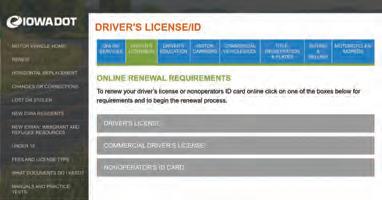
• Click on “Commercial Driver’s License.”
• Double check that you meet all the eligibility requirements.
When logging on to the system, make sure you have your current driver’s license number and a credit card handy.
As part of the process, you will be asked a series of questions related to your vision, residential status, organ donation preferences, and other optional designations. You will also be asked to confirm your residential and mailing addresses and the personal information we have on file from your last renewal.
Once you have completed the information, you will be able to review, update and confirm the information you provided. If you are not eligible to complete the online renewal, you will receive information about why and how to proceed.
“Properly and safely licensing commercial drivers no longer means that every driver needs to take time off the road just to renew,” said Burkett. “The ability to renew a commercial driver’s license online is a great step forward.”













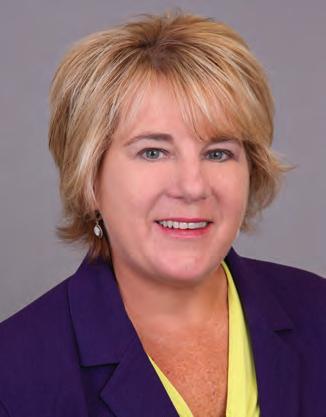
The American Transportation Research Institute (ATRI) released the findings of its 2022 update to An Analysis of the Operational Costs of Trucking. A record number of motor carriers contributed their 2021 financial data for this year’s research. The “Ops Costs” report provides detailed breakdowns of numerous line-item costs by fleet size and sector, allowing for tailored benchmarking.
The total marginal cost of trucking grew by 12.7 percent in 2021 to $1.855 per mile, the highest on record. Leading contributors to this increase were fuel (35.4% higher than in 2020), repair and maintenance (18.2% higher than in 2020), and driver wages (10.8% higher than in 2020). On a cost-per-hour basis, costs increased to $74.65.
The trucking industry experienced many new, atypical market conditions in 2021 and their effects can clearly be seen in the Ops Costs data. Overall, fleets with 100 or fewer trucks spent 4.9 cents more per mile than fleets with more than 100 trucks – closing the 2020 gap with larger fleets by 70 percent. While larger fleets spent less than smaller fleets on insurance premiums per mile, the advantage was offset by higher
out-of-pocket incident costs per mile for large fleets.
In response to the truck driver shortage, total driver compensation at $0.809 per mile was 10 percent higher than in 2020.
Faced with challenges throughout the supply chain, carriers emphasized greater efficiency. Empty or “deadhead” mileage decreased to 14.8 percent, and average truck fuel economy increased to 6.65 miles per gallon. This year’s report includes several new efficiency metrics, such as annualized driver turnover, average dwell time at shipper facilities, and revenue per truck. The financial health of trucking remained strong throughout 2021 despite spiking costs, with an average operating margin in most sectors at 10 percent.
Since its original publication 15 years ago, ATRI has received over 27,000 requests for the Operational Costs reports.

You can access this valuable report at www. truckingresearch.org or contact the IMTA office to receive the report directly.
Here is a snapshot of some of the information that is included in the report:
The American Transportation Research Institute (ATRI) has released a new report that investigates how to best integrate younger adults aged 18 to 25 into trucking careers. This research, a top priority of ATRI’s Research Advisory Committee in 2021, synthesizes a variety of data and analyses including younger driver surveys, carrier interviews, and the latest workforce statistics. The research also documents motor carrier perspectives on participating in the new FMCSA Safe Driver Apprenticeship Pilot Program.
The ATRI research found that, while Millennial and Gen Z drivers are partially motivated by pay, the majority of them consider other factors equally or even more important when it comes to joining or remaining with a motor carrier. Eightyfour percent of younger drivers consider company culture important. The report goes on to describe initiatives, such as rewarding veteran drivers for informal mentorship, which can build the communitycentered cultures that younger drivers seek.
Structured feedback was found to be a key factor in successfully training Millennial and Gen Z drivers, who desire coaching – a continual process of short, frequent, and more personal meetings – in addition to more traditional evaluations. Similarly, younger adults are more likely to enter the industry when fleets produce transparent recruitment and marketing materials that highlight both younger employees and expanded career paths.
The research also outlines three pathways toward creating high school trucking and logistics clubs to promote industry awareness among teenagers who are still exploring their career interests.
“ATRI has provided a one-stop resource for creating work environments where younger employees are both productive and fulfilled,” said DriverReach Founder and CEO Jeremy Reymer. “Carriers looking to increase their number of younger employees or participate in the new Safe Driver Apprenticeship Program will find this report very useful.”
“CARRIERS LOOKING TO INCREASE THEIR NUMBER OF YOUNGER EMPLOYEES OR PARTICIPATE IN THE NEW SAFE DRIVER APPRENTICESHIP PROGRAM WILL FIND THIS REPORT VERY USEFUL.”


Leading








In conjunction with IMTA’s 75th Anniversary celebration in 2017 the current show trailer made its debut with the previous wrap highlighting the personal, relationship side of trucking --- It Takes 250,000 People to Move Iowa Forward…Like My Mom. As with anything, over time the wrap was showing its age and it was determined a newer wrap was needed with a message that all demographics could relate to. And the perfect message to do just that? The timeless message of the trucking industry --- If You Got It, a Truck Brought It. Tying the message into the design was the easy part, showing visuals of what trucks deliver and making sure every age demographic was able to identify with a specific image or two on the trailer.
The feedback from the new wrap has been overwhelmingly positive so much in fact that the wrap was turned into a billboard to show appreciation of the trucking industry leading up to National Truck Driver Appreciation Week (September 10 – 17). Two billboards debuted in early September, with locations being in Des Moines (I-235 south of Broadway Avenue) and Cedar Rapids (I - 380 south of 33rd Avenue SW). Be on the lookout if you’re in either of these areas!

In conjunction with IMTA’s 75th Anniversary celebration in 2017 the current show trailer made its debut with the previous wrap highlighting the personal, relationship side of trucking --- It Takes 250,000 People to Move Iowa Forward…Like My Mom. As with anything, over time the wrap was showing its age and it was determined a newer wrap was needed with a message that all demographics could relate to. And the perfect message to do just that? The timeless message of the trucking industry --- If You Got It, a Truck Brought It. Tying the message into the design was the easy part, showing visuals of what trucks deliver and making sure every age demographic was able to identify with a specific image or two on the trailer.
The feedback from the new wrap has been overwhelmingly positive so much in fact that the wrap was turned into a billboard to show appreciation of the trucking industry leading up to National Truck Driver Appreciation Week (September 10 – 17). Two billboards debuted in early September, with locations being in Des Moines (I-235 south of Broadway Avenue) and Cedar Rapids (I - 380 south of 33rd Avenue SW). Be on the lookout if you’re in either of these areas!
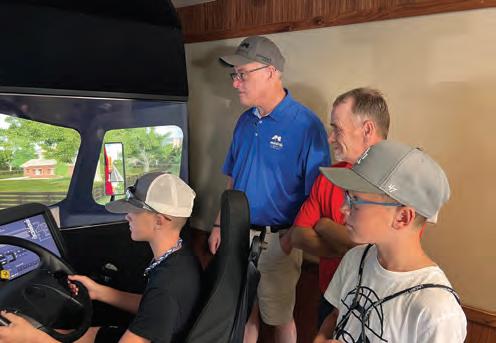



For the second consecutive year, the IMTA show trailer proved to be a strong and effective voice at the Iowa State Fair --- and a very loud, visual voice with the new trailer wrap. During the duration of the fair nearly 12,000 individuals entered the IMTA show trailer, and approximately 5,000 test drove the simulator. Trucking certainly has a bright future ahead with all the excitement about the industry from those that took the time to visit the show trailer.
“This show trailer is the real deal, and it proved to be due to the variety of people that entered the doors of the trailer to try the simulator or to just learn about trucking. There were grandmas, there were high schoolers, there were toddlers. Everyone was excited about trucking, and we couldn’t have been more excited to be a part of their experience,” said volunteer Matt Schmitz from Panama Transfer.
The IMTA would not be able to commit to having the show trailer at the Iowa State Fair without those who volunteered their time to make our efforts possible. These volunteers not only assisted with the driving simulator but also promoted the various careers offered by the trucking industry, discussed the importance of trucking in everyday life, and shared their personal stories with visitors of the trailer. Thank you to the following companies & for helping with our efforts: CRST The Transportation Solution, Dickey Transport, Eldon C. Stutsman, Hirschbach Motor Lines, Hy-Vee, JT Logistics, Keane Thummel Trucking, Midwest Wheel Companies, Panama Transfer, PDI, PJ Foodservice, Ruan Transportation, Solar Transport, Truck Center Companies, Truck Country, TrueNorth Companies and West Side Transport.
11:00 AM - 1:00 PM
HIRSCHBACH MOTOR LINES
Dubuque, Iowa
4:00 PM - 6:00 PM
HAWKEYE COMMUNITY COLLEGE Waterloo, Iowa
11:00 AM - 1:00 PM
SANTA MARIA WINERY Carroll, Iowa
4:00 PM - 6:00 PM
THE WARRIOR HOTEL Sioux City, Iowa
TUESDAY, OCTOBER 18
4:00 PM - 6:00 PM
TRUCK CENTER COMPANIES
Clear Lake, Iowa

matter your membership status, we invite you to learn more about becoming part of trucking’s collective voice
Since 1942 the Iowa Motor Truck Association’s sole purpose has been to provide a voice for Iowa’s trucking industry. A strong, collective voice composed of highly respected carriers, vendors, and other like-minded individuals. And what’s better than to put that voice to use and share just what we are doing and the role that YOU, the trucking industry, plays in this collective voice.
& learn opportunities
discussion
q & a
food
Advocacy Efforts
Elections Insight
Future Endeavors
Image Enhancement
Regulatory Updates

Show Trailer Efforts
Workforce Developments
WEDNESDAY, OCTOBER 19
11:00 AM - 1:00 PM
MIDWEST PETERBILT GROUP
Ankeny, Iowa
THURSDAY, NOVEMBER 3
11:00 AM - 1:00 PM
TANTARA TRANSPORTATION CORP. Muscatine, Iowa
4:00 PM - 6:00 PM
THOMPSON TRUCK & TRAILER
Cedar Rapids, Iowa

The dispatcher is at the heart of every trucking operation and each day the pulse of the operation rests in the dispatcher’s expertise, demeanor, and ability to manage a lot of things and people at one time. As we all know, the dispatcher is critically important to the success of the operation and the work they do must never go unnoticed.
In the dispatcher world there are never two days the same, nor a ‘typical’ day. Some of my routine duties include arranging freight with customers; constantly communicating with our fleet of drivers; monitoring locations of drivers and their available hours; answering various correspondence; and handling whatever else may come up.
What do you find to be the most challenging aspect of your role?
Rewarding?
The logistics of putting together trips is definitely the most challenging, or puzzling at times. Having to coordinate the available loads with a driver and having that all make sense financially. Also, solving the issues that suddenly arise from unexpected problems or situations. Endless problem solving!
Are there certain skills and/or qualities one must possess in order to be a successful dispatcher?
Staying calm in the moment, being able to multi-task, and work in a fast paced and everchanging environment. Being able to work with a lot of different personalities is absolutely necessary, and always remember that the folks you are working with --- professional truck drivers --- have the hardest job in the company.
The role of a dispatcher in the trucking industry can involve many pressures, what do you feel to be the most misunderstood pressure?
Being able to satisfy everyone.
You have to be a good listener and you have to remember that they have lives outside of that truck. Also, recognizing that the stress the drivers deal with on the road is real, and trying to alleviate that stress in any way possible.
What tools/resources throughout your career have you relied on to become a successful dispatcher professional?
I think the best resources I have relied on are the people, the heart and soul of the trucking industry. The most useful items I have learned in this role were from folks that had been in the industry, in any type of capacity. We all can learn from each other.








This summer has been filled with an abundance of networking opportunities amongst IMTA members thanks to the IMTA Happy Hours hosted by the LEAD Council. A grand total of 300 members and non-members attended these social events throughout the past six months and we couldn’t be more grateful for each person that took the time to attend. We look forward to more happy hours in 2023!

This year’s Leadership Conference primarily focused on personal and professional development and proved to be successful thanks to the heavy-hitting topics of workplace ethics, managing a polarized workforce, dealing with difficult conversations and employees, and more. However, the highlight of the conference is always the panel composed of IMTA leadership sharing their personal leadership journeys. Each year the Leadership Conference continues to succeed in building the future leaders of the trucking industry, and we look forward to carrying on this tradition in 2023.

IMTA Holiday Open House
Thursday, December 1
3:00 PM - 6:00 PM
IMTA Office
IMTA Leadership Class Wednesday, March 1 & Thursday, March 2 Wednesday, April 5 & Thursday, April 6
IMTA Office
Happy Hour hosted by the LEAD Council Wednesday, April 5
4:00 PM – 7:00 PM
Des Moines
Safety Professionals Conference Wednesday, April 19 & Thursday, April 20
IMTA Office
Happy Hour hosted by the LEAD Council Thursday, May 18
4:00 PM – 7:00 PM Cedar Rapids
Truck PAC Golf Outing Thursday, May 25 Legacy Golf Club; Norwalk

Happy Hour hosted by the LEAD Council Thursday, June 1

4:00 PM – 7:00 PM
Sioux City
IMTA Leadership Conference Wednesday, June 7 & Thursday, June 8
IMTA Office
Truck Driving Championships
Thursday, June 22 & Friday, June 23 Prairie Meadows; Altoona
Happy Hour hosted by the LEAD Council
Thursday, July 13
4:00 PM – 7:00 PM Dubuque
Happy Hour hosted by the LEAD Council
Thursday, August 3
4:00 PM – 7:00 PM Council Bluffs
IMTA at the Iowa State Fair
Thursday, August 10 – Sunday, August 20
Happy Hour hosted by the LEAD Council Thursday, September 14

4:00 PM – 7:00 PM Davenport
IMTA Management Conference
Tuesday, September 19 & Wednesday, September 20 Hilton Des Moines Downtown
There are 50 state trucking associations, and they are all extremely dedicated in their mission to serve the trucking industry. While each association has their own unique culture, bylaws and operating models, each association plays a valuable role in advocat ing for the trucking industry.
Over the years, as less is accomplished in Washington DC, the heavy lifting is done at the state level and the impact of these important legislative battles is far reaching and impactful.
One prime example is what has been taking place in the State of Wyoming since 2010. The Wyoming Trucking Association has successfully defeated legislative initia tives calling for the tolling of I-80 FIVE TIMES! Legislation was proposed in 2010, 2011, 2013, 2020, and again in 2021. Each time the legislation gets more aggressive and the battle to stop the legislation gets more difficult.

In 2021, this small trucking association pulled out every stop to kill the legislation. The proposed legislation was very broad and encompassing. While the legislation didn’t have a specific proposed fee the sponsor specifically referenced a rate of $.25 per mile for trucks which had been proposed in previous legislation. The sponsor also stated that he didn’t believe anyone would
divert from I-80 over this small amount of 25 cents per mile.
I-80 is 402 miles across the State of Wyoming which amounts to $100.50 one way per truck to go from border to border. When you do the math, the numbers add up quickly especially when you consider the multiple trips that many national carriers make through Wyoming. One member of the association that is domiciled in Utah and travels I-80 extensively estimated their annual financial impact would be over $100,000. They currently pay the associa tion $1,900 in annual dues.
While the $.25 was NOT in the proposed legislation, that was the only figure that was discussed during the sponsor’s introduc tion of the bill and the same number that WYDOT used when they made presenta tions relative to this proposal. Ultimately the proposed bill passed the full Senate by a vote of 16-13-1. When the bill moved to the House where it was assigned to the House Transportation committee, and eventually “died” when the Transportation Committee Chair determined they were not going to take up the bill.
While there was no assignment in Wyoming for an interim study this year for tolling I-80, there is always a possibility that an individual sponsor will bring it up
in 2023, especially given the ease in which it passed out of the Senate. The Wyoming Trucking Association will continue to take the lead in this important battle and given the number of trucks that pass through the State of Wyoming via I-80, many trucking companies from all over the country are the beneficiaries of this hard work.
These battles are exhausting and expen sive for state trucking associations. While many national carriers are appreciative of the work being done by the state trucking associations, understandably, obtaining membership in numerous associations is not their business model.
However, if you travel through Wyoming on a regular basis, providing financial sup port and earmarking it specifically for their ongoing legislative efforts to stop tolling is the best way to support the efforts that ultimately impact your bottom line too. (Checks can be sent to Wyoming Trucking Association, Box 1175, Casper, Wyoming 82601).
Staying on top of the legislative efforts by state trucking associations is yet another way that you can proactively impact your bottom line.
We are all in this together!


The 2022 Iowa Truck Driving Championships was welcomed back to Prairie Meadows Hotel & Conference Center with open arms from both the venue and the attendees of this annual event. This year's competition hosted 80 competing drivers representing 22 companies; 90 volunteers representing an additional 20 companies; and 91 sponsors representing an additional 59 companies beyond those already volunteering or competing. The support of this event certainly doesn't go unnoticed by everyone involved with the TDC.
A special thanks to Randy Kopecky with Don Hummer Trucking who served as the Chairman of the event and John Holt with Ruan Transportation serving as the Vice Chair. These two volunteer leaders along with a great committee put on another first-class event. Additionally, the volunteers that took the time away from work to lend a hand doesn’t go unseen. They are truly who make the event run smoothly and we couldn’t have done it without them.


The eight division winners advanced to the National Truck Driving Championships in Indianapolis, held in mid-August. Those competing included Jimmy Lair, FedEx Freight; Allen Sohn, FedEx Freight; Warren Ratliff, Quest Liner; Tex Halligan, Ruan Transportation; Dean Filmer, Decker Truck Line, Inc; Toby Royster, FedEx Freight; Steven Iburg, XPO Logistics; and Richard Barre, XPO Logistics. While Iowa’s participants didn’t bring home any hardware, memories were made and determination to return to Nationals hold strong.


“The TDC is such an important tribute to the professional truck driver, and I hope that each of the competitors enjoyed every minute of not only the competition but all the other activities that allowed them to step back and soak in all the appreciation, support and gratitude that is at the core of the Iowa Truck Driving Championships,” said IMTA Chairman of the Board Brenda Dittmer with Weinrich Truck Line, Inc.



Don Hummer Trucking
JOHN HOLT Co-Chairman
Ruan Transportation
KEITH LAMFERS
Casey’s General Stores
MARVIN MCGINNIS
BRIDGET NIXON
Solar Transport
TERRY PUMP
CRST The Transportation Solution, Inc.

BRIAN PYLE
Pyle Transportation

KRYSTIN SITZMANN
TrueNorth Companies
DAVE ZERBE
Keane Thummel Trucking














 3 AXLE VAN DIVISION
4 AXLE VAN DIVISION
(From left to right) TDC Event Chairman: Randy Kopecky (Don Hummer Trucking),
3 AXLE VAN DIVISION
4 AXLE VAN DIVISION
(From left to right) TDC Event Chairman: Randy Kopecky (Don Hummer Trucking),




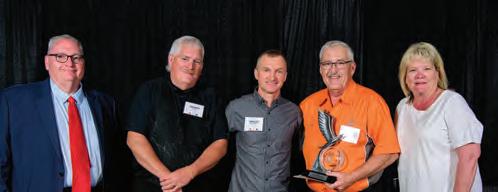














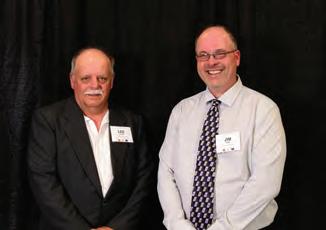










All Seasons Trucking, Inc.
Casey's General Stores, Inc.
CRST The Transportation Solution, Inc.
Decker Truck Line, Inc.
Des Moines Transportation Co.
FedEx Express
Green Products Company
Hy-Vee, Inc.
Johnsrud Transport, Inc.
Panama Transfer, Inc.
Perishable Distributors of Iowa
Pomp's Tire Service
Pyle Transportation
Ruan Transportation
Solar Transport
TanTara Transportation Corp
Ten D, Inc
Weinrich Truck Line, Inc.
West Side Transport, Inc.
MHC Kenworth
Midwest Peterbilt Group
Midwest Wheel Companies
Thompson Truck & Trailer
Truck Center Companies
Truck Country
TrueNorth Companies
CRST The Transportation Solution, Inc.

Don Hummer Trucking Drivewyze, Inc.
EBE Technologies
Ennis Corp.
Federated Insurance
Fleetworthy Solutions, Inc.
Intellistop USA
JMS Transportation
Johnsrud Transport, Inc.
Old Dominion Freight Line, Inc.
Omnitracs, LLC
Pilot Flying J Platform Science
Ruan Transportation
Sully Transport, Inc.
The Paladin Group
United Trailer Leasing Walmart Transportation
Bendix Commercial Vehicle Systems LLC

Bradshaw, Fowler, Proctor & Fairgrave, P.C.
Central Trailer Service
Citi-Cargo & Storage
Cottingham & Butler
Fareway
Hanifen Towing
Interstate PowerSystems
Iowa 80 Truckstop
MHCS
PrePass Safety Alliance
Trivista Companies, Inc. / QSC LLC
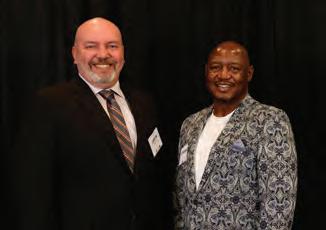
Warren Transport, Inc.
Argee
BMO
Crossroads
Gatr Truck Center
Great West Casualty Company
GTG Peterbilt,
Holmes Murphy & Associates
Housby
JMT Trucking Company
Joe Morten and Son,
Kwik
Lockton
Lube-Tech
Lytx
Michelin
Mid-States
Ottsen
SambaSafety
Tenstreet
Thermo
US
Vault













